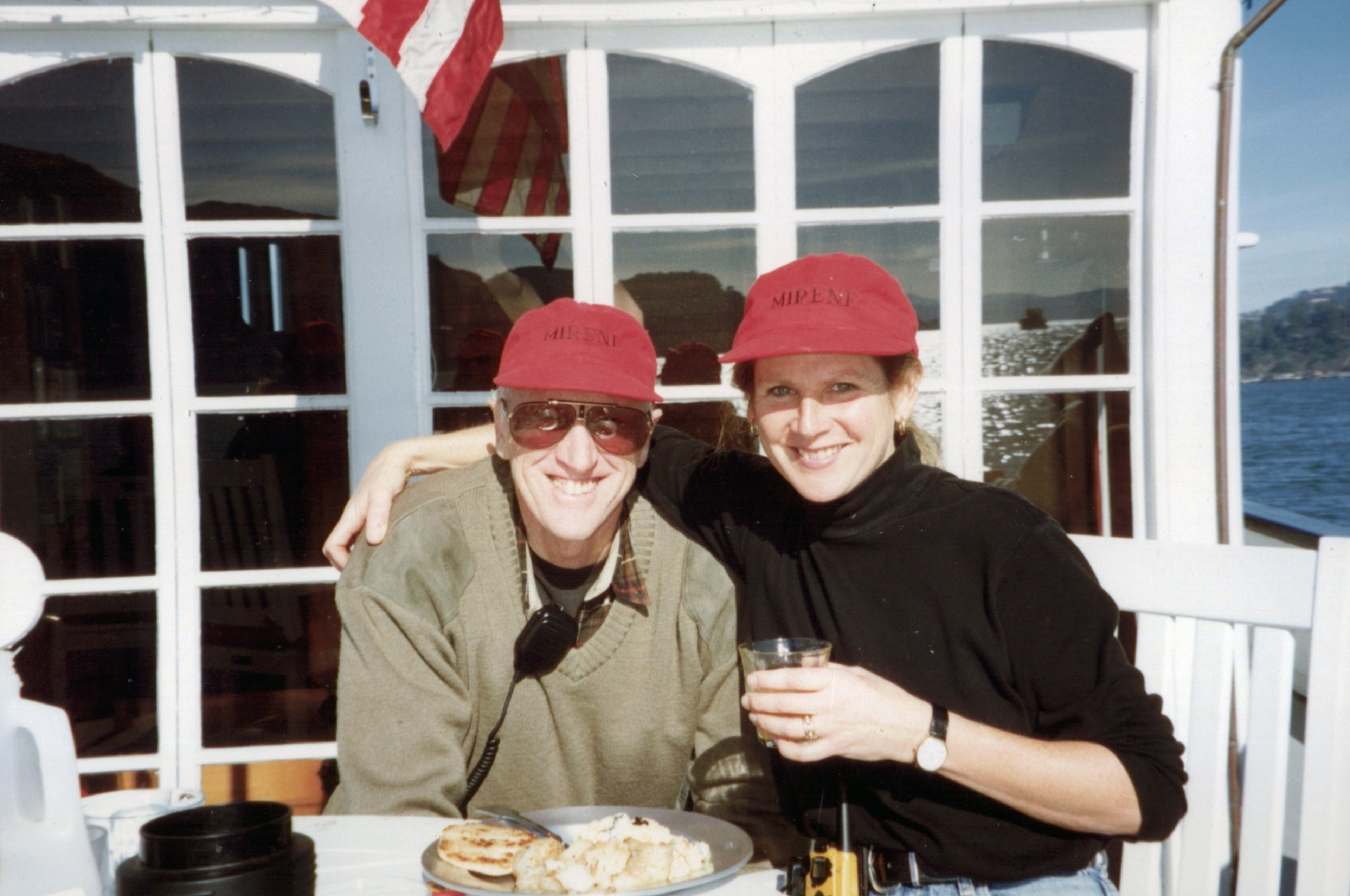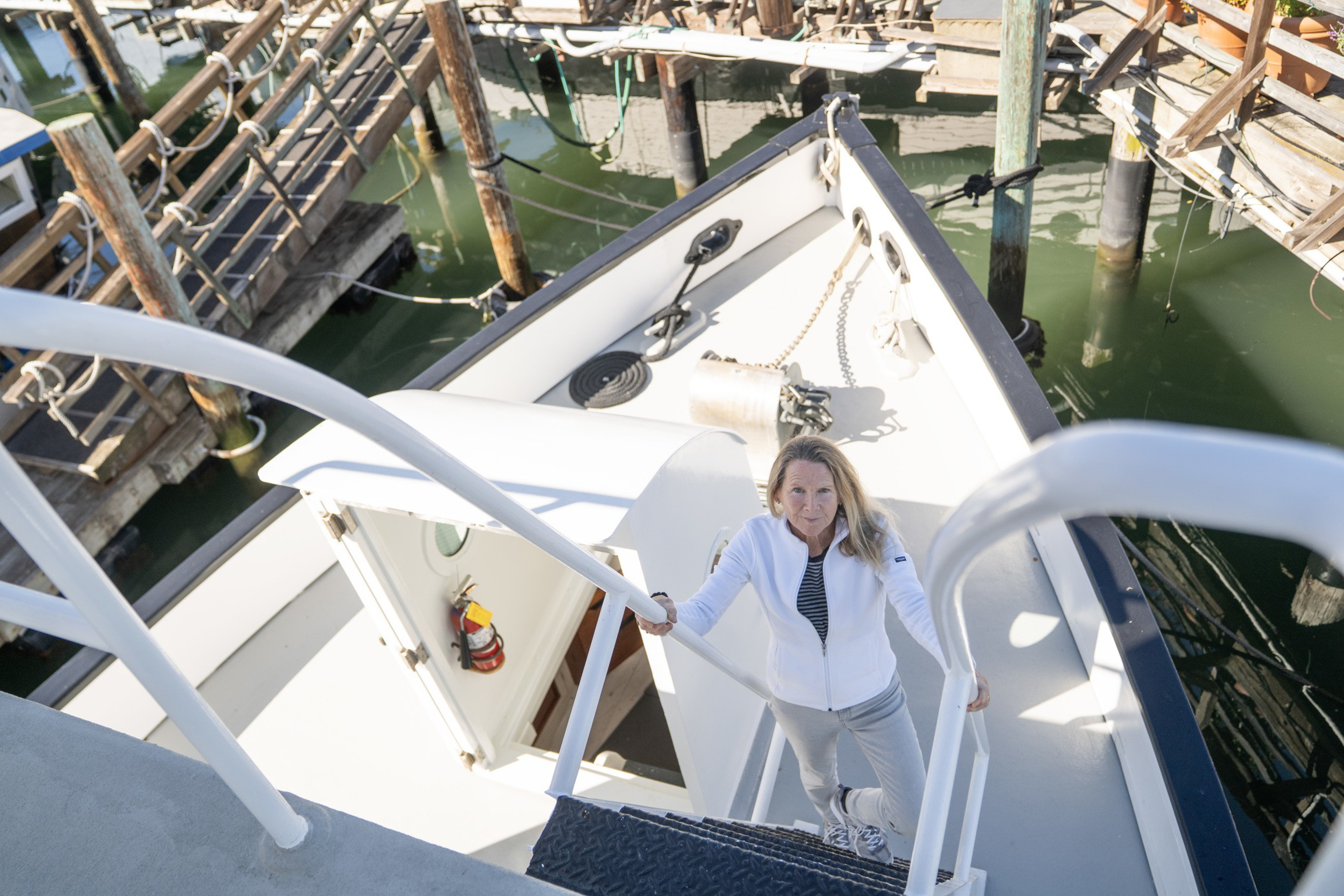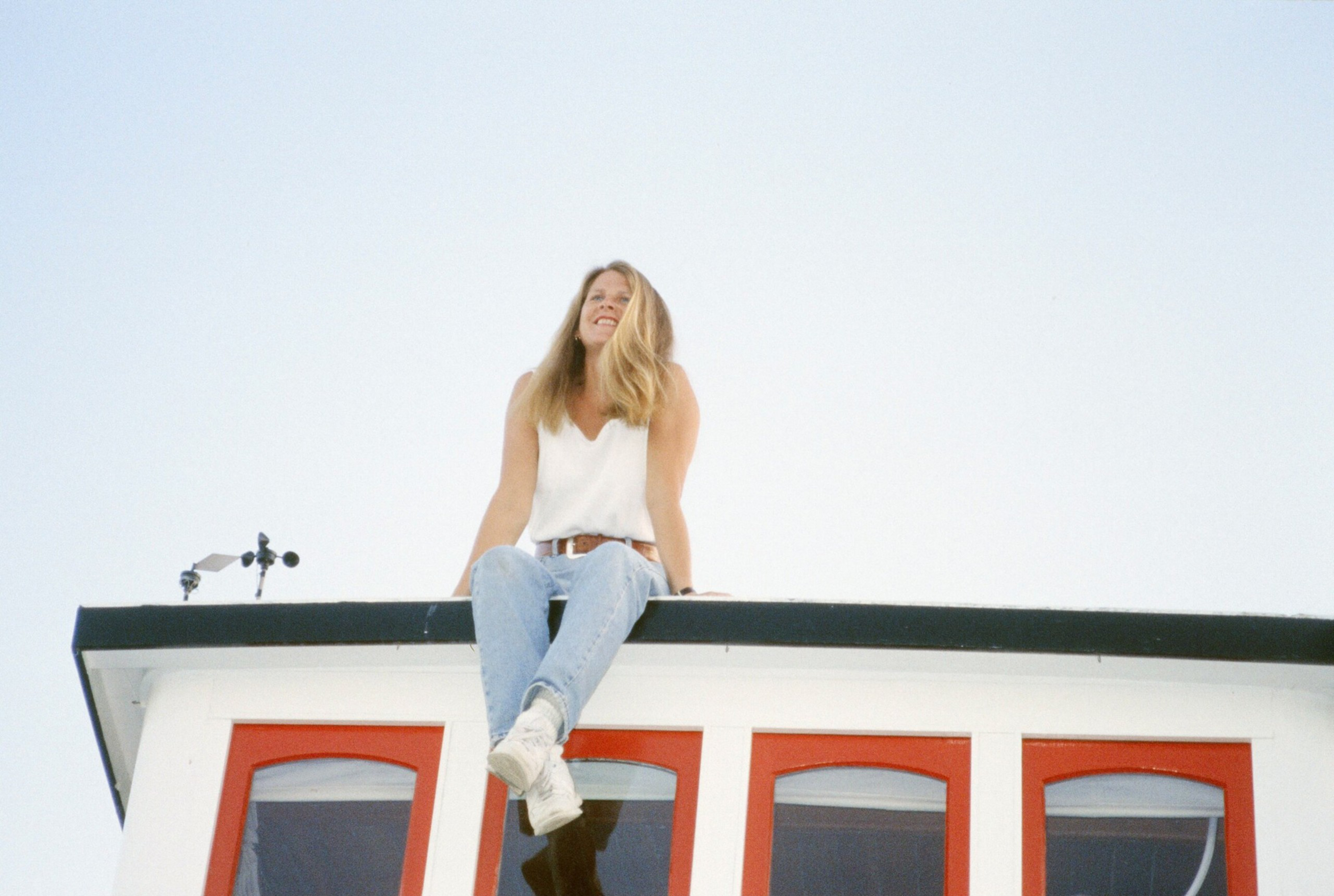Stewart Brand is not one to get mired in nostalgia. Even though the 86-year-old’s claim to fame is founding the influential counterculture bible Whole Earth Catalog — canon for first-generation hackers and homesteading hippies — he’s not stuck in the past. And that goes for the floating home in Sausalito he’s inhabited happily for 40 years.
“I don’t feel any misgivings about it,” he said of selling the 1912 formerly dilapidated tugboat he and his wife, Ryan Phelan, 73, spent over a decade making seaworthy. They’ve put it on the market for $1.8 million, alongside their stationary houseboat next door listed at $700,000. “It’s really just time to move on.”

Brand’s happy to gaze through and appreciate the porthole to the past; he just doesn’t want to live in it anymore.
Though he’s the mastermind behind the Long Now Foundation, which is building a 10,000-year clock inside a West Texas mountain, Brand considers himself a pragmatist. (His 2009 book “Whole Earth Discipline” has the subtitle “An Ecopragmatist Manifesto.”) But he threw all that out the window when he laid eyes on Mirene in 1981. To hear Brand tell it, there’s the head, and there’s the heart.
“Some of the old boats and old buildings, especially on the East Coast, have been loved long enough that they draw you into loving them,” he said. “Mirene is good at being loved.”
Mirene was built in Coos Bay, Oregon, and named for the wife of its first captain. Over time, it was pushed out of tugboat service in favor of newer, more efficient models, before finding new life as a fishing boat and lumber hauler in the 1970s. Mirene may also have had a spell running drugs from Oregon to San Francisco.
By the time Brand and Phelan saw it, he recalls, the boat was a “hulk on the waterfront, but she floated.”

The couple were familiar with the Sausalito houseboat community as one of the cheapest places to live in Marin County and the home of many Whole Earth staffers.
“It was wild and woolly and highly creative and highly inventive,” Brand said of the houseboat scene in the late ‘70s and early ’80s. “It was just the sort of people we enjoyed.”
Among their house-boating friends was Phil Frank, who drew the cartoons “The Elderberries” and “Farley.”
“He said, ‘You know, you guys ought to just buy that tugboat that’s rotting out in the middle of the bay and redo her with a SWAT team of carpenters. It’ll be an incredible living space,’” Phelan said. “Well, we’ve hired just about everyone on the waterfront. This kind of work doesn’t come overnight.”
It took two years of restoration just for the boat to be made livable. In the kitchen, they scraped off layers of paint to expose the original wood siding and stained it amber.
They built the dining area around the wood table where, legend has it, Otis Redding wrote “(Sittin’ on) The Dock of the Bay.” The old engine room was turned into a sunken living room with French doors that lead to the aft deck.
In 1996, the new engine went in, and the couple were off to the races — literally. Mirene won a Bay Area tug boat race in 2000. Hundreds of red Mirene hats have been given as souvenirs for those who took a trip aboard. A New Year’s Day outing, in which everyone on their dock was invited for a ride on the bay, became an annual tradition.

In 2005, a fateful trip up the Petaluma River on Mirene inspired the couple to buy their first home on land: a horse ranch in Petaluma, right along the water.
“It was a spur-of-the-moment decision, like, ‘Oh, if we’re ever gonna buy land, let’s buy marsh, and Mirene can come up,’” Phelan said.
The ranch started as a weekend retreat but became their primary home during the pandemic. With no children, there was no one to take over Mirene. As Brand settled in to write his next book, their outings on the boat dwindled, and they hired the port captain of the Angel Island/Tiburon Ferry to maintain it and help out on the few occasions a year that they took it for a spin.
“Mirene is not low-maintenance,” Brand said.
Still, parting ways is difficult. After Brand was waylaid with pneumonia last year, Phelan recognized that it was time.
“It’s really not age-appropriate in a lot of ways,” she said, noting the ladder needed to access the top-deck bedroom. “I’m physically strong and all that, but it’s been such a work of love. I don’t really want to do it without Stewart.”

Wanna buy a boat? How about two?
Even after the health scare, it took an introduction to Steve Sekhon, a Compass real estate agent who also lives in a Sausalito houseboat, a few docks away, to convince them to move ahead with the decision to sell.
A large part of Sekhon’s business is houseboat sales – a different beast from other boat sales, which are more about selling a lifestyle on the move than staying put in a forever home. But Mirene has the one-of-a-kind ability to serve both purposes, as the only houseboat in Sausalito with both the permission and the ability to leave its berth. It’s a rarity: both a home and a yacht, the agent said.
That’s one reason Mirene has a premium price tag. The typical price of a houseboat in the community is between $1 million and $1.5 million. Mirene also comes with a renewable, rent-controlled, 10-year lease on a prime-location berth, which allows for easy access to the bay and overlooks one of the dock’s biggest and most beloved community gathering places.
The couple are also selling the smaller, immovable houseboat docked at the next berth next door. Sekhon can see it going to someone from Napa or San Francisco looking for a “pied a mer” in Marin, or perhaps as a privacy hedge for whoever buys Mirene.
The connection to Brand doesn’t hurt, but the eventual buyer is likely to consider it a fun fact to bring up at dinner parties, he said, not a reason to make a nearly $2 million purchase.


Looking forward, looking back
Phelan hopes that Mirene’s buyer will stay in touch — continuing a chain of stewardship that has enriched the couple’s experience aboard. Phelan has invited Mirene’s descendants, some of whom are named Mirene, aboard over the years and kept them in the loop on the decision to sell.
“The most recent Mirene just passed away,” she said. “I had a party for her 80th birthday out here. We know the whole family.”
She also bought a more traditional houseboat on a neighboring dock, in part to keep up with the community on the water and in part because she continues to work “very full time” at her biotech-related environmental nonprofit, Revive & Restore, based nearby.
Brand is content to make a clean break.
“Ryan is much more loyal to connections that she’s made, whether it’s with her high school buddies or a boat,” Brand said. “I tend to not do that.”

He instead prides himself on adapting with the times. The communes that sprang up in the 1960s and ’70s — the ones the Whole Earth Catalog was originally meant to serve — didn’t last long once women realized they were the ones stuck doing all the cooking and farming, he said. Nor are there many people still dipping their own candles. But the crafts and DIY movement that grew out of the commune craze led to enduring events like Burning Man, which he has attended several times.
He was also an early advocate for the power of personal computing, even hosting some of the planning sessions for the first hackers conference aboard Mirene. Brand said he still has faith that tech can change the world for the better.

“I don’t think any of the Big Tech corporations really strike me as sinister,” he said —except, for a stint, Microsoft. “They invent stuff. Some of it works; some of it doesn’t. Some of it goes in strange directions. There’s bad judgment; there’s good judgment.”
He outright dismissed concerns about AI and said those who aren’t onboard follow in a long line of underinformed skeptics imagining worst-case scenarios.
“Oh, hell, they sound alarms about every goddamn thing in the world. Sounding alarms has been a pastime for quite a while now,” he said. “It’s almost always wrong.”

